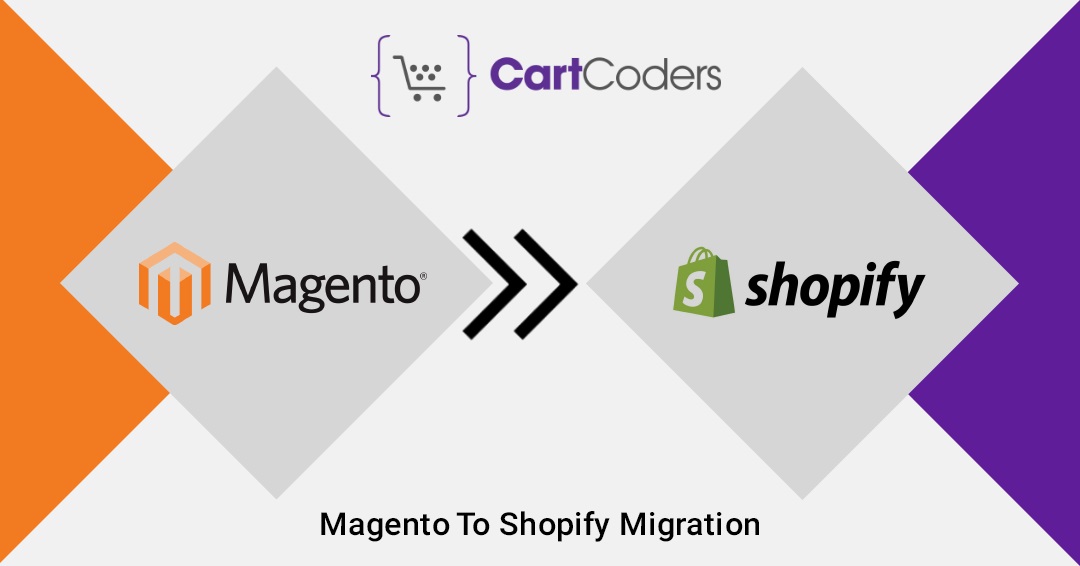Magento to Shopify Migration In Just in Few Steps

Magento and Shopify both are popular e-commerce platforms. It supports online operations for more than a million retail establishments worldwide. When it comes to choosing an e-commerce platform, you’re deciding the fate of your business, the future of your success.
If not chosen wisely, an inadequately powered platform will limit the future growth and success of an online store. Magento and Shopify both are leading e-commerce platforms in today’s e-commerce market. Both have their benefits and that’s why it’s tricky to choose between them. Many big giants prefer Magento to Shopify Migration Services.
Let’s see how it will make a difference:
Integration Tools
For tool integration, Shopify can be really helpful. Creating an integration layer on Shopify is much less labor-intensive to Magento. The reason behind this is the flat architecture & well-documented APIs.
In case you are using the Xtento in Magento then below are some applications that can be useful for you:
EZ Exporter by Highview Apps:
It is the closest application to Xtento for managing order exports. You can easily perform the manipulation and calculates the field process within the admin panel of Xtento and configure a schedule to export to an FTP location.
Hence, it is a great application if you batch your order exports vs real-time processing.
StockSync for scheduling regular inventory or product updates:
In most of the integration applications, you will not the freedom of modification like Magento with expressions. You need to run with specific increments on an hourly or daily basis.
Analytics
In terms of analytics, Shopify is much better than Magento for built-in-analytics, specifically for Google Analytics. Shopify enables e-commerce and if you are creative then you can explore the rich JavaScript data layer that Shopify has for your other GTM conversion tags without having to build a full dataLayer from the ground up.
Moreover, using GTM’s dataLayer on your own instead of using the built-in Google Analytics setting is completely doable as well.
You can also use the native enhanced e-commerce in Magento 2 by importing the sample GTM container provided. Keep in mind Shopify provides you fermium services but I would say it’s nice to just plug and play.
The major benefit is through order success conversion tracking is also simple and painless within the admin if you prefer the non-GTM route as well. Here, you don’t have to concern about crazy complexity while using digital marketing tags such as Doubleclick, Criteo, etc.
Shopify Apps vs. Magento Plugins
Eventually, both platforms are amazing for a technical user to install and configure a plugin. Of course, there must be very low-quality low-quality apps as well. In short, you don’t have the hardware to host your site and all of your apps on your own, you are left to trust the infrastructure of the app provider. So, your application providers are hosting your app and integration. So if they have issues, you have issues.
Product Feeds
The catalog of simple product SKUs only managed by the native Google Shopping feed within Shopify suffice. Be aware of your product quality during migration to avoid the issues at lunch with your news feeds.
You will see that all of your product IDs are automatically tagged with a Shopify id as well. It will keep your SKU as your product ID in your feed and perform a better analysis matching up shopping paid spend per ID to Google Analytics conversion data.
You can also use the custom labels to extend product dimensions for analysis then I’ve found this pretty easy to do with DataFeedWatch as well.
Managing 301 Redirects
This is a common issue that can be managed by Shopify admin. You can also install the Traffic Control app which allows for easy importing in bulk CSVs as well.
Final Words:
That concludes our Magento vs. Shopify battle. As ever, if you have any questions, please get in touch with Cartcoders Shopify Development Company, we offer the best Shopify Store Setup services. Our Shopify-friendly Experts are always willing to help you with your brand journey.







